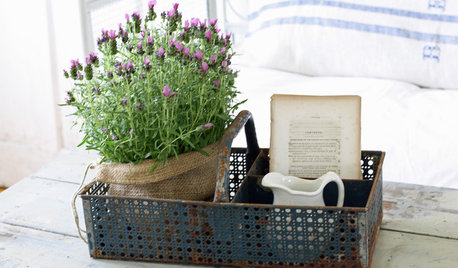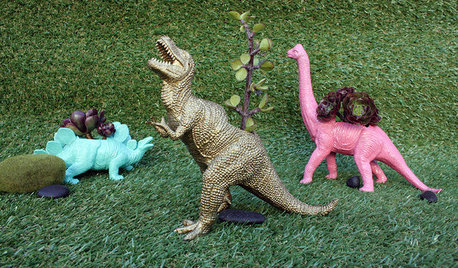What kind of soil do houseplants come planted it?
needinfo001
9 years ago
Related Stories

GARDENING GUIDESHouzz TV: Make a Worm Bin for Rich Soil and Happy Plants
A worm-powered compost bin that can fit under a sink turns food scraps into a powerful amendment for your garden. Here’s how to make one
Full Story
MOST POPULARThe Perfect Houseplant for People Who Kill Houseplants
If you can fill a jar with water, you can keep golden pothos vine happy — and it will pay you back with cleaner air and a greener home
Full Story
CONTAINER GARDENSHappy Houseplants, Happy People
Potted plants add life and beauty to a room. Learn easy ways to keep them healthy
Full Story
GARDENING GUIDESGet the Dirt on Your Garden’s Soil
Understand how your soil supports your plants so you can ensure your garden’s success
Full Story
GARDENING GUIDESHave Acidic Soil in Your Yard? Learn to Love Gardening Anyway
Look to acid-loving plants, like conifers and rhododendrons, to help your low-pH garden thrive
Full Story
HOUSEPLANTSOutsmart Winter — Make Houseplants of Your Garden Growers
No need to watch Jack Frost play Wreck the Rosemary. Bring your garden inside for the winter, using containers and these guidelines
Full Story
HOUSEPLANTS7 DIY Projects That Have Fun With Houseplants
Go beyond the ordinary when you add a touch of green to your interiors
Full Story
HOUSEPLANTS8 Houseplants You Can't Kill
They're forgiving and let you forget. Houseplants don't get any easier than this
Full Story
GARDENING GUIDESThe Poop Scoop: Enrich Your Soil With Good Old Manure
Get over the ick factor already — this natural super-ingredient for soil has so many benefits, you'll wonder why you ever went chemical
Full Story
GARDENING GUIDESHow to Stop Worrying and Start Loving Clay Soil
Clay has many more benefits than you might imagine
Full Story










tapla (mid-Michigan, USDA z5b-6a)
petrushka (7b)
Related Professionals
Ashland Landscape Architects & Landscape Designers · Chattanooga Landscape Architects & Landscape Designers · Woodinville Landscape Architects & Landscape Designers · Mount Wilson Landscape Architects & Landscape Designers · Medford Landscape Contractors · Brooklyn Park Landscape Contractors · Deerfield Landscape Contractors · Ellicott City Landscape Contractors · Fort Myers Landscape Contractors · Gaithersburg Landscape Contractors · Lake Worth Landscape Contractors · Middletown Landscape Contractors · Monterey Landscape Contractors · Stony Brook Landscape Contractors · Wilton Landscape Contractorstapla (mid-Michigan, USDA z5b-6a)
petrushka (7b)
nomen_nudum
tapla (mid-Michigan, USDA z5b-6a)
petrushka (7b)
paul_
tapla (mid-Michigan, USDA z5b-6a)
rooftopbklyn (zone 7a)
stewartsjon
Tiffany, purpleinopp Z8b Opp, AL
ken_adrian Adrian MI cold Z5
tapla (mid-Michigan, USDA z5b-6a)
petrushka (7b)
tapla (mid-Michigan, USDA z5b-6a)
petrushka (7b)
tapla (mid-Michigan, USDA z5b-6a)
petrushka (7b)
dellis326 (Danny)
petrushka (7b)
teengardener1888
tapla (mid-Michigan, USDA z5b-6a)
petrushka (7b)
Tiffany, purpleinopp Z8b Opp, AL
petrushka (7b)
Tiffany, purpleinopp Z8b Opp, AL
petrushka (7b)